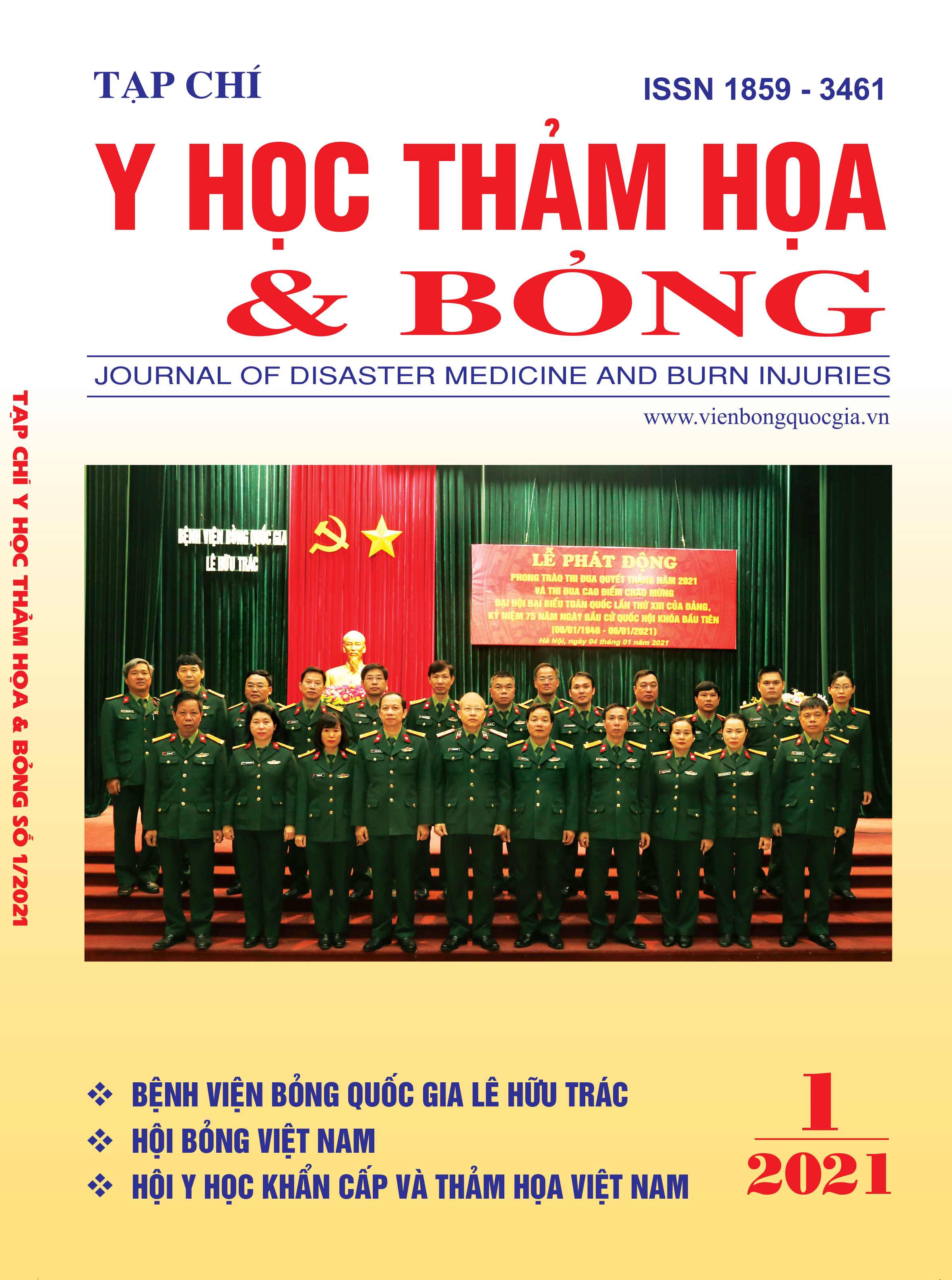Evaluating the efficacy of nebulized Heparin combined with Pulmicort and N-acetylcysteine in ICU burn patients with inhalation injury, Le Huu Trac National Burn Hospital.
Main Article Content
Abstract
Methods: A intervention study on 29 adult patients with inhalation injury and mechanical ventilation in the ICU - Le Huu Trac National Burn Hospital from 08/2019 to 06/2020.
The patients were randomized into two groups:
Group 1: Nebulised Heparin combined with Pulmicort and N-acetylcysteine.
Group 2: Nebulised Pulmicort and N-acetylcysteine. Comparing on the 1st, 3rd and 7th days after aerosol.
Results: The results showed that the compliance of the Heparin aerosolized group was statistically significantly higher than that of nebulizer without Heparin (p < 0.05). On the 3rd day after mechanical ventilation, the PaO2/FiO2 ratio was higher and the lung injury score was significantly lower in the heparin nebulized group (p < 0.05). There was no difference in lung injury in the Heparin nebulized group (p > 0.05), while in the non-Heparin nebulizer group significantly increased (p < 0.05). The platelet value difference was not statistically significant before and after treatment in both groups (p > 0.05).
Conclusions: Nebulization with Heparin combined with Pulmicort and N-acetylcysteine significantly improved compliance, did not change the lung injury score.
Article Details
Keywords
Burn, inhalation injury, Heparin
References
2. Bhadade R., De Souza R., Harde M.et al. (2011). Clinical characteristics and outcomes of patients with acute lung injury and ARDS. Journal of postgraduate medicine, 57 (4), 286.
3. Enkhbaatar P., Cox R. A., Traber L. D.et al. (2007). Aerosolized anticoagulants ameliorate acute lung injury in sheep after exposure to burn and smoke inhalation. Critical care medicine, 35 (12), 2805-2810.
4. Tasaki O., Mozingo D. W., Dubick M. A.et al. (2002). Effects of Heparin and Lisofylline on Pulmonary Function Following Smoke Inhalation Injury in an Ovine Model, ARMY INST OF SURGICAL RESEARCH FORT SAM HOUSTON TX,
5. Holt J., Saffle J. R., Morris S. E.et al. (2008). Use of inhaled heparin/N-acetylcysteine in inhalation injury: does it help? Journal of burn care & research, 29 (1), 192-195.
6. Elsharnouby N. M., Eid H. E., Abou Elezz N. F.et al. (2014). Heparin/N-acetylcysteine: an adjuvant in the management of burn inhalation injury: a study of different doses. Journal of critical care, 29 (1), 182. e181-182. e184.
7. McIntire A. M., Harris S. A., Whitten J. A.et al. (2017). Outcomes following the use of nebulized heparin for inhalation injury (HIHI Study). Journal of burn care & research, 38 (1), 45-52.
8. Sterner J. B., Zanders T. B., Morris M. J.et al. (2009). Inflammatory mediators in smoke inhalation injury. Inflammation & Allergy-Drug Targets (Formerly Current Drug Targets-Inflammation & Allergy), 8 (1), 63-69.
9. Enkhbaatar P., Herndon D. N., Traber D. L. (2009). Use of nebulized heparin in the treatment of smoke inhalation injury. Journal of burn care & research, 30 (1), 159-162.
10. Glas G. J., Horn J., Binnekade J. M.et al. (2020). Nebulized heparin in burn patients with inhalation trauma-safety and feasibility. Journal of Clinical Medicine, 9 (4), 894.


